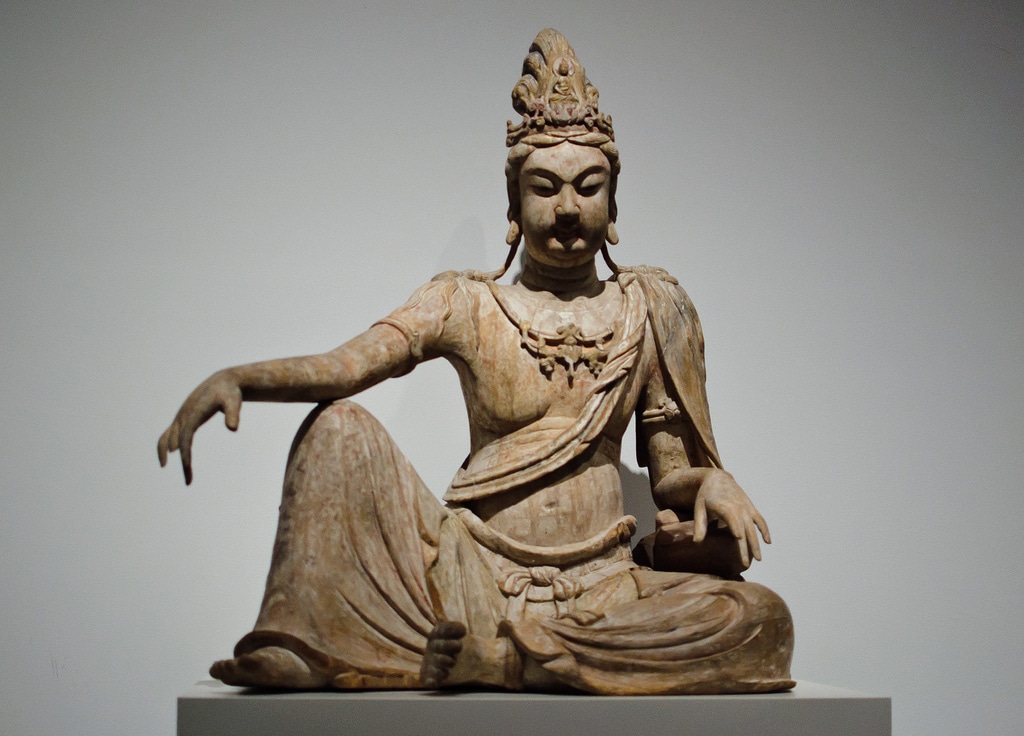
The Heart Sutra is written in the form of a dialogue between teacher and student. Here the teacher is pointing out a way of perceiving the mind and body. The teacher is clearing up a confusion about our common perception of ourselves. This sutra is an explanation of how the student can embody this paradoxical reality, which in-turn dissolves unnecessary suffering.
The Heart Sutra is one of the most important Buddhist teachings and chants. It is used by meditation practitioners throughout the world. A sutra is a highly regarded teaching or explanation of basic principles.
For a good english translation I would suggest: http://old-shambhala.shambhala.org/teachers/pema/shtk.php
I have heard many meditation teachers lecture on this sutra, including the Dalai Lama, and I have studied many more. I have noticed that each teacher has a little different interpretation, and each has expressed it differently in their personal lives. This indicates to me that each of them had to make their own sense of this paradoxical teaching. Each had to interpret, practice, and digest it as they were guided by their teachers.
It appears to me that this sutra can serve as a dream or a vision. and therefore might function as a psychological perspective for meditators.
“As a rule the meaning of a dream is compensatory to the conscious attitude, i.e., it adds to the latter what was lacking in it . The dream is a natural attempt to redress a lack of balance, and it changes the conscious attitude to such an extent that a state of equilibrium is restored.” C.G. Jung (CW para. 1391)
It appears to me that the Heart Sutra compensates our common human tendency to develop rigid perceptions about ourselves. We tend toward fixed perceptions of our feelings, thoughts, attitudes, motivations, relationship with the body, meaning of life and so on. The Heart Sutra is about the empty nature of those solid perceptions.
The Heart Sutra is giving us a way of perceiving the most fundamental of paradoxes, form and emptiness. It stirs us to wonder, “How do I bring this perception into my life with others?” “What opposites do I struggle with?”; such as, life and death, courage and fear, happy and sad, inner life and outer life, peace and chaos, body and mind, work and play, rejection and acceptance, etc. As in a dream, we may have many associations to these paradoxes.
Now as the Heart Sutra and Buddhism move more and more into the western world, we have different associations with this text or dream image of the teacher-student dialogue because we have a different culture and ancestry. But we all want the same things; happiness, love, meaning and so forth.
The closing of the sutra is about the transcendence of these paradoxes in our life. “gate gate paragate parasamgate bodi svaha”
Chogyam Trungpa Rinpoche’s translation is: OM, GONE, GONE, GONE BEYOND, GONE COMPLETELY BEYOND, AWAKE, SO BE IT.
http://old-shambhala.shambhala.org/teachers/pema/heart_sutra1t.php
Therefore, the Heart Sutra is pointing to a transcendence of these opposites and an awakening to their given relationship, so be it. The paradoxes do not go away, but help us to awaken to our dependent relationship on them. If we reflect on the death of ourself or someone we love it will illuminate the preciousness of life. We learn courage from our fears. We notice tightness in the body when the mind has anxiety. There is no learning without it’s opposite.
